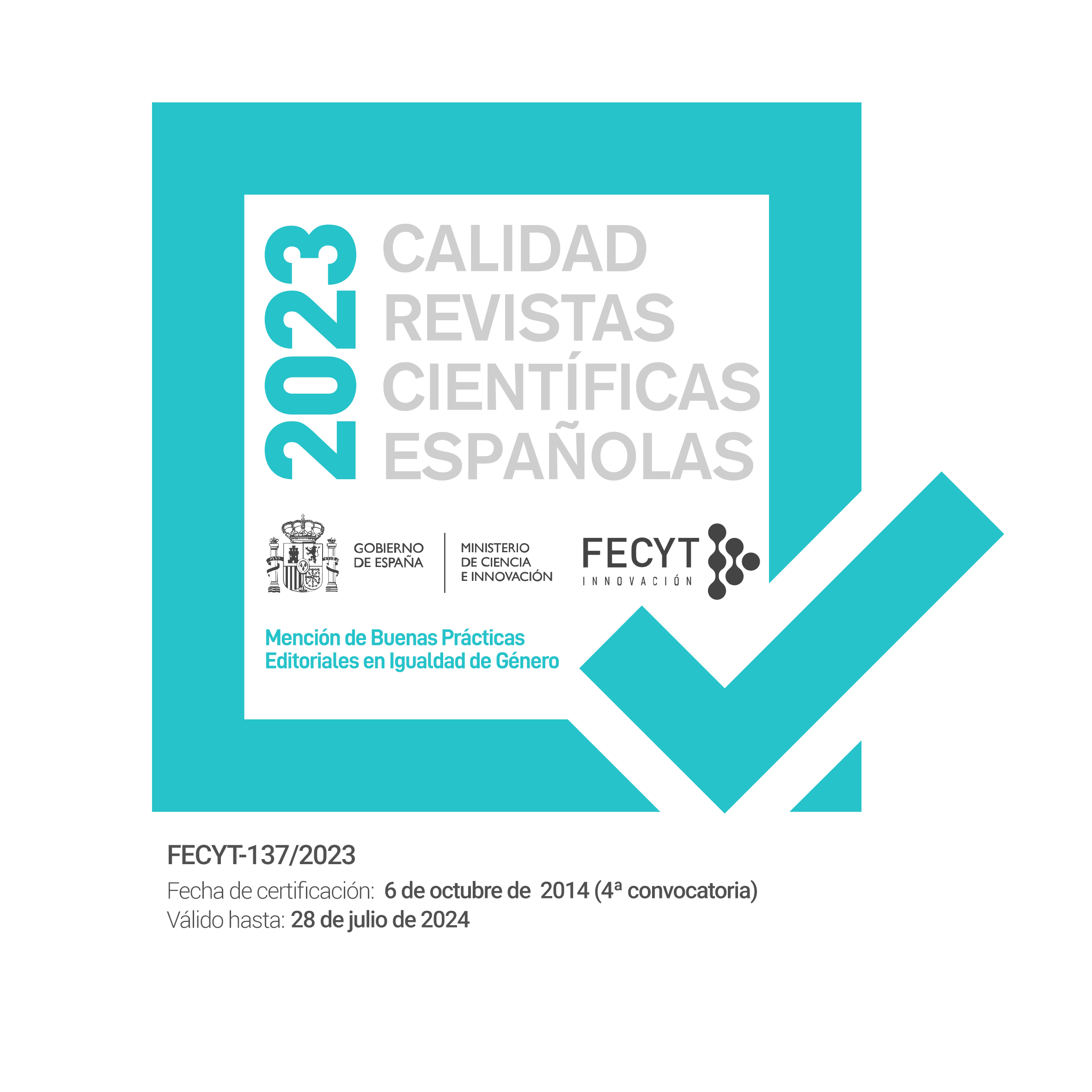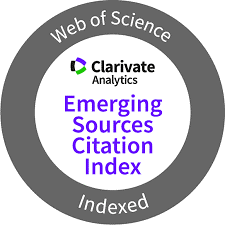Estereotipos de género y redes sociales: consumo de contenido generado por influencers entre los preadolescentes y adolescentes
DOI:
https://doi.org/10.31921/doxacom.n38a2034Palabras clave:
Género, influencers, menores, redes sociales, estereotiposResumen
La interiorización de los estereotipos de género comienza en una etapa tan temprana como la preadolescencia y la adolescencia. Las redes sociales y los influencers destacan entre todos los factores involucrados en su adopción y asimilación. Dado que los menores comienzan a consumir contenido en redes sociales muy pequeños, los influencers se han convertido en modelos de referencia para ellos. La presente investigación tiene por objetivo examinar las preferencias y comportamientos de los menores en redes sociales respecto a sus influencers favoritos y detectar hasta qué punto pueden reforzar los estereotipos de género preexistentes. Con este objetivo, se ha llevado a cabo un cuestionario (nivel de confianza <95% y error muestral +-3,5%) entre 800 menores españoles de 8 a 16 años, consumidores habituales de contenido creado por influencers. Los resultados de la encuesta muestran que los niños y adolescentes tienden a seguir influencers con diferentes perfiles, dedican una cantidad de tiempo desigual a esta actividad y muestran preferencias por diferentes redes sociales y tipos de contenidos. Estos resultaron conducen a la conclusión de que hay una tendencia generalizada a reproducir comportamientos y preferencias asociadas con los estereotipos tradicionales masculino y femenino.
Descargas
Citas
Aran-Ramspott, S., Fedele, M. y Tarragó, A. (2018). Funciones sociales de los Youtubers y su influencia en la preadolescencia, Comunicar, 57, 71-80. https://doi.org/10.3916/C57-2018-07
Arias-Rodríguez, A y Sánchez-Bello, A. (2022). Informal Learning with a Gender Perspective Transmitted by Influencers through Content on YouTube and Instagram in Spain. Social Sciences, 11, 341. https://doi.org/10.3390/socsci11080341
Bailey, J. B., Steeves, V., Burkell, J. y Regan, P. (2013). Negotiating with Gender Stereotypes on Social Networking Sites: from ‘Bicycle Face’ to Facebook. Journal of Communication Inquiry, 37(2), 91-112. https://doi.org/10.1177/0196859912473777
Bond, B.J. (2009). He Posted, She Posted: Gender Differences in Self-disclosure on Social Network Sites. Rocky Mountain Communication Review, 6(2), 29-37.
Butkowski, C. P., Dixon, T. L., Weeks, K. R. y Smith, M. A. (2020). Quantifying the feminine self(ie): Gender display and social media feedback in young women’s Instagram selfies. New Media & Society, 22(5), 817–837. https://doi.org/10.1177/1461444819871669
Cai, Z., Fan, X. y Du, J. (2017). Gender and attitudes toward technology use: A meta-analysis. Computers & Education, 105, 1-13. https://doi.org/10.1016/j.compedu.2016.11.003
Cárdaba, M. A., Porto, L. y Verde, L. (2022). Representation of female beauty in advertising. Effects on emotional well-being, body satisfaction and weight control in young women. El Profesional de la Información, 31(1), https://doi.org/10.3145/epi.2022.ene.17
Castillo-Abdul, B., Romero-Rodríguez, L. M. y Larrea-Ayala, A. (2020). Kid influencers in Spain: understanding the themes they address and preteens' engagement with their YouTube channels. Heliyon, 6(9), e0505. https://doi.org/10.1016/j.heliyon.2020.e05056
Choi, G. Y. y Lewallen, J. (2018). “Say Instagram, kids!”: Examining sharenting and children's digital representations on Instagram. Howard Journal of Communications, 29(2), 144-164. https://doi.org/10.1080/10646175.2017.1327380
Corbetta, P. (2023). Metodología y técnicas de investigación social, McGraw-Hill.
De Veirman, M., Hudders, L. y Nelson, M. R. (2019). What is influencer marketing and how does it target children? A review and direction for future research. Frontiers in psychology (10), 2685. https://doi.org/10.3389/fpsyg.2019.02685
Döring, N., Reif, A. y Poeschl, S. (2016). How gender-stereotypical are selfies? A content analysis and comparison with magazine adverts. Computers in Human Behavior, 55, 955-962. https://doi.org/10.1016/j.chb.2015.10.001
Eisend, M. (2019). Gender roles. Journal of Advertising, 48(1), 72 80. https://doi.org/10.1080/00913367.2019.1566103
Ellemers, N. (2018). Gender stereotypes. Annual review of psychology, 69, 275-298. https://doi.org/10.1146/annurev-psych-122216-011719
Falzone, A. E., Brindis, C. D., Chren, M. M., Junn, A., Pagoto, S., Wehner, M. y Linos, E. (2017). Teens, tweets, and tanning beds: rethinking the use of social media for skin cancer prevention. American journal of preventive medicine, 53(3), 86-94. https://doi.org/10.1016/j.amepre.2017.04.027
Faulkner, W. y Lie, M. (2007). Gender in the Information Society: Strategies of Inclusion. Gender, Technology and Development, 11(2), 157-177. https://doi.org/10.1177/097185240701100202
Feijoo, B. y Sádaba, C. (2021). The Relationship of Chilean Minors with Brands and Influencers on Social Networks. Sustainability, 13, 2822. https://doi.org/10.3390/su13052822
Gallagher, M. (2013). Media and the representation of gender. En The Routledge companion to media & gender (pp. 41-49). Routledge. https://doi.org/10.4324/9780203066911-8
García, A., Catalina, B. y Tur, V. (2021). Diferencias de edad y género en el uso y consumo de medios sociales entre los adolescentes. AdComunica, 22, 211-234. https://doi.org/10.6035/2174-0992.2021.22.12
Gauntlett, D. (2008). Media, Gender and Identity. An introduction. Routledge. https://doi.org/10.4324/9780203930014
Gurrieri, L. y Drenten, J. (2019). The hashtaggable body: negotiating gender performance in social media. En S. Dobscha (Ed.) Handbook of research on gender and marketing (pp.101-116), Edward Elgar Publishing. https://doi.org/10.4337/9781788115384.00010
Haferkamp, N., Eimler, S.C., Papadakis, A.M. y Kruck, J.V. (2012). Men Are from Mars, Women Are from Venus? Examining Gender Differences in Self-presentation on Social Networking Sites. Cyberpsychology, Behavior and Social Networking, 15(2), 91-98. https://doi.org/10.1089/cyber.2011.0151
Herrero-Curiel, E., & La-Rosa, L. (2022a). Secondary education students and media literacy in the age of disinformation. [Los estudiantes de secundaria y la alfabetización mediática en la era de la desinformación]. Comunicar, 73, 95-106. https://doi.org/10.3916/C73-2022-08
Herrero-Curiel, E., & La-Rosa, L. (2022b). Los referentes mediáticos de los estudiantes en secundaria. En Martínez Pastor, E. & Blanco Ruíz, M., (Coord.). Menores y medios sociales: miradas desde la educación, la creación y el consumo mediático (pp. 57-74), Fragua.
Hoek, R. W., Rozendaal, E., Van Schie, H. T., Van Reijmersdal, E. A. y Buijzen, M. (2020). Testing the effectiveness of disclosure in activating children’s advertising literacy in the context of embedded advertising in vlogs. Frontiers in Psychology, 11, 451. https://doi.org/10.1089/cyber.2011.0151
Instituto Nacional de Estadística, INE (Ed.) (2021). Encuesta sobre equipamiento y uso de tecnologías de información y comunicación en los hogares 2021. https://www.ine.es
Instituto de la Juventud, INJUVE (Ed.) (2021). Informe Juventud en España 2020. https://www.injuve.es
Jackson, S. (2007). “She might not have the right tools and he does”: children’s sense-making of gender, work and abilities in early school readers. Gender Educ, 19, 61–77. https://doi.org/10.1080/09540250601087769
Jones, D. E., Greenberg, M. y Crowley, M. (2015). Early social-emotional functioning and public health: The relationship between kindergarten social competence and future wellness. American Journal of Public Health, 105(11), 2283–2290. https://doi.org/10.2105/ajph.2015.302630
Kollmayer, M., Schober, B., y Spiel, C. (2018). Gender stereotypes in education: development, consequences, and interventions. Eur. J. Dev. Psychol, 15, 361– 377. https://doi.org/10.1080/17405629.2016.1193483
Kumari, A. y Joshi, H. (2015). Gender stereotyped portrayal of women in the media: Perception and impact on adolescent. IOSR Journal of Humanities and Social Science (IOSR-JHSS), 20(4), 44-52.
Leaper, C. (2015). Gender and social-cognitive development, En Lerner, R. M., Liben, L.S. y Muller, U. (Eds.), Handbook of Child Psychology and Developmental Science (pp. 806–853). Willey. https://doi.org/10.1002/9781118963418.childpsy219
Liebers, N. y Schramm, H. (2019). Parasocial Interactions and Relationships with Media Characters - An Inventory of 60 Years of Research. Communication Research Trends, 38, 2, 4-31.
Lieper, C. y Friedman, C.K. (2007). The Socialization of Gender. En J. Grusec y P. Hastings (Eds.), Handbook of Socialization: Theory and Research (pp. 561-587), Guilford.
Lou, C. (2022). Social media influencers and followers: Theorization of a trans-parasocial relation and explication of its implications for influencer advertising. Journal of Advertising, 51(1), 4-21. https://doi.org/10.1080/00913367.2021.1880345
Martínez, C. y Olsson, T. (2019). Making sense of YouTubers: how Swedish children construct and negotiate the YouTuber Misslisibell as a girl celebrity. J. Children Media, 13, 36–52. https://doi.org/10.1080/17482798.2018.1517656
Melzer, A. (2018). Of princesses, paladins, and players: gender stereotypes in video games. En J. Breuer, D. Pietschmann, B. Liebold, B. P. Lange (Eds.) Evolutionary Psychology and Digital Games (pp. 205-220). Routledge. https://doi.org/10.4324/9781315160825-16
Observatorio Nacional de Tecnología y Sociedad, ONTSI (2022). El uso de la tecnología por los menores en España. https://doi.org/10.30923/094-22-009-2
Oberst, U., Chamarro, A., Renau y V. (2016a). Gender stereotypes 2.0: Self-representations os adolescents on Facebook [Estereotipos de género 2.0: Auto-representaciones de adolescentes en Facebook], Comunicar, 48, v. XXIV, 81-90. https://doi.org/10.3916/C48-2016-08
Oberst, U., Renau, V., Chamarro, A. y Carbonell, X. (2016b). Gender stereotypes in Facebook profiles: Are women more female online? Computers in Human Behavior, 60, 559-564.
OECD (2020). “Do boys and girls have similar attitudes towards competition and failure?”, PISA in Focus, No. 105. OECD Publishing.
https://doi.org/10.1787/a8898906-en
Pérez-Torres, V., Pastor-Ruiz, Y. y Abarrou-Ben-Boubaker, S. (2018). Youtuber videos and the construction of adolescent identity. [Los youtubers y la construcción de la identidad adolescente]. Comunicar, 55, 61-70. https://doi.org/10.3916/C55-2018-06
Popa, D. y Gavriliu, D. (2015). Gender representations and digital media. Procedia-Social and Behavioral Sciences, 180, 1199-1206. https://doi.org/10.1016/j.sbspro.2015.02.244
Quazi, A., Hasan, N., Abayomi-Alli, O. y Hardaker, G. (2022). Gender differences in information and communication technology use & skills: a systematic review and meta-analysis. Education and Information Technologies, 27, 4225-4258. https://doi.org/10.1007/s10639-021-10775-x
Rideout, V., Peebles, A., Mann, S. y Robb, M.B. (2021). The common sense census: Media use by tweens and teens, 2021. Common Sense. https://bit.ly/3dPMHCl
Serrate-González, S.; Sánchez-Rojo, A. Andrade. Silva, L. y Muñoz- Rodríguez, J. M. (2023). Identidad online: la cuestión del género y la edad en el comportamiento adolescente ante las redes. Comunicar, 75, XXXI, 9-20. https://doi.org/10.3916/C75-2023-01
Siddiq, F. y Scherer, R. (2019). Is there a gender gap? A meta-analysis of the gender differences in students’ ICT literacy. Educational Research Review, 27, 205-217. https://doi.org/10.1016/j.edurev.2019.03.007
Smit, C. R., Buijs, L., van Woudenberg, T. J., Bevelander, K. E. y Buijzen, M. (2020). The impact of social media influencers on children’s dietary behaviors. Frontiers in psychology, 10, 2975. https://doi.org/10.3389/fpsyg.2019.02975
Solbes-Canales, I., Valverde-Montesino, S. y Herranz-Hernández, P. (2020). Socialization of gender stereotypes related to attributes and professions among young Spanish school-aged children. Frontiers in psychology, 11, 609. https://doi.org/10.3389/fpsyg.2020.00609
Steinfeld, N. (2022). Adolescent gender differences in internet safety education. Feminist Media Studies, 1-18. https://doi.org/10.1080/14680777.2022.2027494
Tifferet, S. (2019). Gender differences in privacy tendencies on social network sites: A meta-analysis. Computers in Human Behavior (93), 1-12. https://doi.org/10.1016/j.chb.2018.11.046
Tifferet, S. (2020). Gender differences in social support on social network sites: A meta-analysis. Cyberpsychology, Behavior, and Social Networking, 23(4), 199-209.
Tolbert, A.; Drogos, K. (2019). Tweens’ Wishful Identification and Parasocial Relationships with YouTubers. Frontiers Psychology, 10, https://doi.org/10.3389/fpsyg.2019.02781
Vrontis, D., Makrides, A., Christofi, M., y Thrassou, A. (2021). Social media influencer marketing: A systematic review, integrative framework and future research agenda. International Journal of Consumer Studies, 45(4), 617-644.
Ward, L. M. y Grower, P. (2020). Media and the development of gender role stereotypes. Annual Review of Developmental Psychology, 2, 177-199. https://doi.org/10.1146/annurev-devpsych-051120-010630
Wong, W. I. y VanderLaan, D. P. (2020). Sex differences in early life: A cross-cultural perspective. Cambridge international handbook on psychology of women, 83-95. https://doi.org/10.1017/9781108561716
Zayer, L. T., Sredl, K., Parmentier, M. A. y Coleman, C. (2012). Consumption and gender identity in popular media: discourses of domesticity, authenticity, and sexuality. Consumption Markets & Culture, 15(4), 333-357. https://doi.org/10.1080/10253866.2012.659437
Descargas
Publicado
Cómo citar
Número
Sección
Licencia
Derechos de autor 2023 Miguel Ángel Martín-Cárdaba, Patricia Lafuente-Pérez, Myriam Durán-Vilches, María Solano-Altaba

Esta obra está bajo una licencia internacional Creative Commons Atribución-NoComercial 4.0.



























